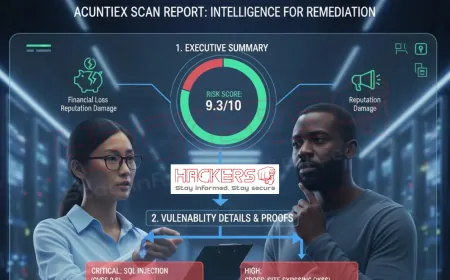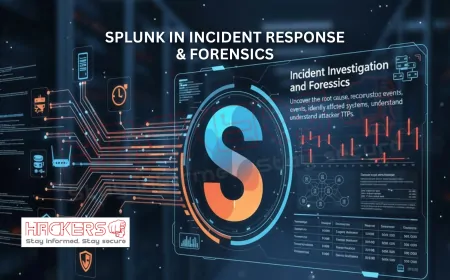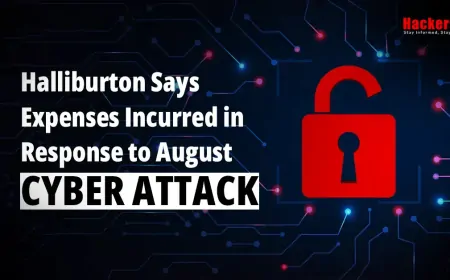What Are the Best Splunk Queries for Cybersecurity Monitoring?
Imagine you are a security analyst at 2 a.m. An alert lights up your screen. Your heart races. Is this a real attack, or just another false alarm? You open Splunk and type a single query. Within seconds, you see the full story: a user failing login 87 times from three different countries in five minutes. You block the account, notify the team, and stop a breach before it begins. That is the power of a great Splunk query. Splunk is the go-to platform for security teams because it collects logs from everywhere: firewalls, servers, cloud services, endpoints, and more. But raw logs are just noise. The real value comes from asking the right questions. The best Splunk queries turn chaos into clarity. They detect threats fast, reduce false positives, and give you proof to act. In this guide, we share 20 of the most effective, real-world Splunk queries used by SOC teams every day. These are not random searches. They are proven, beginner-friendly, and explained in plain English. Whether you are new to Splunk or a seasoned pro, these queries will level up your security monitoring.

Table of Contents
- Why Splunk Queries Are Critical for Cybersecurity
- Understanding SPL: Splunk’s Search Language
- 20 Must-Know Splunk Queries for Security Monitoring
- Quick Reference Table of All Queries
- How to Use and Customize These Queries
- Best Practices for Writing Splunk Security Queries
- Conclusion
Why Splunk Queries Are Critical for Cybersecurity
Cybersecurity is a data problem. Attackers leave traces in logs: failed logins, strange file access, odd network traffic. But most organizations generate millions of log events per day. You cannot read them all.
Splunk queries let you ask precise questions like:
- Who is trying to log in too many times?
- Is anyone downloading files at midnight?
- Why is this server talking to Russia?
A good query finds the needle in the haystack. A great query finds it before the attacker strikes again.
Understanding SPL: Splunk’s Search Language
SPL (Search Processing Language) is how you talk to Splunk. It is simple, powerful, and works like a pipeline.
Every query has three parts:
- Search: What data to look at (e.g.,
index=security) - Pipe (|): Send results to the next command
- Commands: Filter, count, group, or chart (
stats,where,timechart)
Example:
index=security EventCode=4625
| stats count by user
| where count > 20This finds users with more than 20 failed logins.
You do not need to be a coder. Just learn a few commands, and you are ready.
20 Must-Know Splunk Queries for Security Monitoring
1. Brute Force Login Attempts
index=security sourcetype=WinEventLog:Security EventCode=4625
| stats count by Account_Name
| where count > 15
| sort -countDetects users with too many failed logins. Adjust 15 based on your environment.
2. Successful Login After Many Failures
index=security (EventCode=4625 OR EventCode=4624)
| transaction Account_Name maxspan=5m
| where eventcount > 10 AND searchmatch(EventCode=4624)Finds brute-force attacks that eventually work. transaction groups related events.
3. Traffic to High-Risk Countries
index=firewall action=allowed dest_country IN ("CN", "RU", "IR")
| stats count by src_ip, dest_ip
| sort -countFlags allowed connections to countries you do not trust.
4. Malware Beaconing (Regular Outbound Calls)
index=proxy
| stats count, values(url) by src_ip
| where count > 40
| eval calls_per_min = round(count / 60, 2)
| where calls_per_min > 0.9 AND calls_per_min < 1.1Detects malware checking in every minute. Look for near-perfect timing.
5. Ransomware: Rapid File Renaming
index=endpoint sourcetype="WinEventLog:Microsoft-Windows-Sysmon/Operational" EventCode=11
| stats count, values(TargetFilename) by Computer
| where count > 150
| sort -countUses Sysmon to catch processes renaming hundreds of files fast.
6. Privilege Escalation with sudo
index=linux sourcetype=linux_secure "sudo:"
| regex _raw="sudo:.*COMMAND=.*(passwd|useradd|chown)"
| stats count, values(user) by host, _rawTracks dangerous sudo commands that modify users or permissions.
7. Cleartext Passwords in Logs
index=* (password OR pwd OR passwd)
| regex _raw=".*(password|pwd)=[^[:space:]]{4,}.*"
| table _time, host, sourcetype, _rawFinds logs accidentally storing passwords. Fix the app, not just the alert.
8. Web Shell Access
index=web url=*.php (url=*cmd* OR url=*shell* OR url=*eval* OR url=*system*)
| stats count, values(clientip) by url
| where count > 2Detects access to common web shell files or dangerous PHP functions.
9. Lateral Movement via RDP
index=security EventCode=4624 logon_type=10
| stats dc(WorkstationName) as sources, count by Account_Name
| where sources > 3
| sort -sourcesLogon type 10 is RDP. Multiple sources using one account suggests credential reuse.
10. DNS Tunneling (Large Queries)
index=dns
| stats sum(length(query)) as bytes, count by query, src_ip
| where bytes > 1200
| table src_ip, query, bytes, countAttackers hide data in long DNS subdomains. This finds suspicious queries.
11. Rare or New Executables
index=security EventCode=4688
| stats count, earliest(_time) as first_seen by ProcessName, Computer
| eventstats avg(count) as avg, stdev(count) as std
| where count < (avg - 2*std) OR first_seen > relative_time(now(), "-7d")Finds processes running rarely or for the first time.
12. PowerShell Download Cradles
index=security sourcetype=WinEventLog:PowerShell/Operational EventCode=4104
| regex ScriptBlockText=".*(WebClient|DownloadFile|IEX|Invoke-Expression).*"
| table _time, Computer, User, ScriptBlockTextCatches one-line PowerShell scripts that download and run code.
13. Account Used from Many IPs
index=security EventCode=4624
| stats dc(src_ip) as ip_count, values(src_ip) by Account_Name
| where ip_count > 6
| sort -ip_countOne user logging in from many IPs may mean stolen credentials.
14. New Service Installation
index=security EventCode=7045
| stats values(ServiceName), values(ImagePath) by Computer
| where ImagePath="*temp*" OR ImagePath="*downloads*"
| table _time, Computer, ServiceName, ImagePathNew services from user-writable folders are often malicious.
15. Excessive Failed VPN Logins
index=vpn "fail" OR "denied"
| stats count by user, src_ip
| where count > 25
| sort -countDetects VPN brute-force or misconfigured clients.
16. Unusual Outbound Ports
index=firewall action=allowed dest_port NOT IN (80, 443, 53, 22, 3389)
| stats count by src_ip, dest_port
| where count > 50
| sort -countMost traffic uses standard ports. Others may be C2 or exfiltration.
17. Fileless Malware (Script in Memory)
index=endpoint EventCode=4688 ProcessName="*powershell.exe"
| regex CommandLine=".*-WindowStyle Hidden.*|.*-EncodedCommand.*"
| stats count by Computer, CommandLinePowerShell running hidden or with encoded commands is suspicious.
18. Data Exfiltration via HTTP POST
index=proxy method=POST bytes_out>100000
| stats sum(bytes_out) as total, values(url) by src_ip
| where total > 500000
| sort -totalLarge outbound POSTs may mean data upload to attacker servers.
19. Login Outside Business Hours
index=security EventCode=4624
| eval hour=strftime(_time, "%H")
| where hour < 7 OR hour > 18
| stats count by Account_Name, hour
| where count > 5Logins at 3 a.m. may be legitimate, but worth checking.
20. Disabled Antivirus
index=endpoint "disabled" OR "stopped" "antivirus" OR "defender"
| stats values(_raw) by host, sourcetype
| table _time, host, _rawFinds events where AV is turned off, often before an attack.
Quick Reference Table of All Queries
| Threat Type | Key SPL Command | Data Source | Recommended Threshold |
|---|---|---|---|
| Brute Force | EventCode=4625 | stats count by user |
Windows Security | 15+ failures |
| Successful Brute Force | transaction | searchmatch(4624) |
Windows | 10+ events |
| High-Risk Geo | dest_country IN (...) |
Firewall | Any allowed |
| Beaconing | eval calls_per_min |
Proxy | ~1/min |
| Ransomware | EventCode=11 | stats count |
Sysmon | 150+ files |
| sudo Abuse | regex COMMAND=(passwd|...) |
Linux | Any match |
| Password in Logs | regex password=[^ ]{4,} |
All | Any |
| Web Shell | url=*cmd* OR *eval* |
Web | 2+ hits |
| RDP Lateral | logon_type=10 | dc(src) |
Windows | 3+ sources |
| DNS Tunnel | sum(length(query)) > 1200 |
DNS | 1200+ bytes |
| Rare Exe | eventstats stdev |
4688 | Outlier |
| PowerShell Download | "IEX" OR "WebClient" |
PowerShell | Any |
| Account from Many IPs | dc(src_ip) > 6 |
Windows | 6+ IPs |
| New Service | ImagePath="*temp*" |
7045 | Any |
| VPN Brute | "fail" | stats count |
VPN | 25+ fails |
| Unusual Ports | dest_port NOT IN (80,443...) |
Firewall | 50+ hits |
| Fileless Malware | -EncodedCommand |
4688 | Any |
| Exfiltration | method=POST bytes_out>100000 |
Proxy | 500KB+ |
| Off-Hours Login | hour < 7 OR hour > 18 |
Windows | 5+ logins |
| AV Disabled | "disabled" "antivirus" |
Endpoint | Any |
How to Use and Customize These Queries
Follow these steps:
- Paste the query into Splunk’s search bar.
- Set time: Use “Last 15 minutes” for alerts, “Last 7 days” for tuning.
- Change index: Replace
index=securitywith your index name. - Save as alert: Click Save As > Alert. Set trigger: “number of results > 0”.
- Tune thresholds: Run over a week. Adjust counts to reduce noise.
- Add exclusions:
NOT src_ip="192.168.1.*"for internal IPs.
Pro Tip: Use | tstats for speed on large data: | tstats count where index=security EventCode=4625 by _time span=1m
Best Practices for Writing Splunk Security Queries
- Start narrow:
index=prod sourcetype=web, notindex=*. - Filter early: Put
whereright afterindex. - Use
statsto summarize, nottable *. - Include
_timein results for context. - Test with
| head 50to see sample output. - Add comments:
# Brute force detection. - Schedule alerts every 1 to 5 minutes for real-time.
- Link alerts to dashboards for context.
- Review and tune weekly.
Conclusion
The best Splunk queries are simple, fast, and focused. They catch real attacks without drowning you in alerts. The 20 queries in this guide cover the most common threats: brute force, malware, privilege abuse, data theft, and more.
Start with one. Test it. Turn it into an alert. Then add another. Soon, you will have a full security monitoring program built on Splunk.
Because in cybersecurity, the right question at the right time can stop an attack cold. And with Splunk, you always have the answer.
What does SPL stand for?
SPL means Search Processing Language. It is Splunk’s query language for searching and analyzing data.
Do I need to code to use these queries?
No. Just copy, paste, and tweak. Learn a few commands like stats and where.
Where do I run Splunk queries?
In the Splunk web UI, go to the Search & Reporting app and use the search bar.
How often should I run these as alerts?
Every 1 to 5 minutes for critical threats. Every 15 to 60 minutes for others.
What index should I search?
Use the index where your logs are stored. Common: security, main, firewall.
Will these work in Splunk Cloud?
Yes. All queries work the same in Splunk Cloud and on-premises.
How do I reduce false alerts?
Add filters: NOT user="admin", or use baselines with eventstats.
What is the transaction command?
It groups related events (like failed and successful logins) by a common field.
Should I install Sysmon?
Yes. It adds detailed process and file events that Windows misses by default.
How do I save a query to a dashboard?
Run the search, click Save As > Dashboard Panel, and pick a dashboard.
Can Splunk detect unknown threats?
Yes. Behavioral queries (rare processes, beaconing) catch zero-days.
What is tstats and when to use it?
tstats is faster on data models. Use it for high-volume sources.
How do I find my sourcetypes?
Run: | tstats count where index=* by sourcetype
Is it safe to search for passwords?
Only with proper access. Never export full results with real credentials.
Can I schedule queries automatically?
Yes. Save as Report or Alert and set a schedule.
Where can I learn more SPL?
Visit docs.splunk.com or take Splunk Fundamentals 1 (free).
What is Splunk Enterprise Security?
An app that adds correlation rules, risk scoring, and incident tools on top of core Splunk.
Do these queries work on Linux or cloud?
Yes. Change sourcetypes: linux_secure, aws:cloudtrail, etc.
How do I export query results?
Click Export > CSV, JSON, or PDF after running a search.
Where can I get more queries?
Splunkbase: ESCU, Security Essentials, or vendor TAs (Palo Alto, Cisco).
What's Your Reaction?










































































